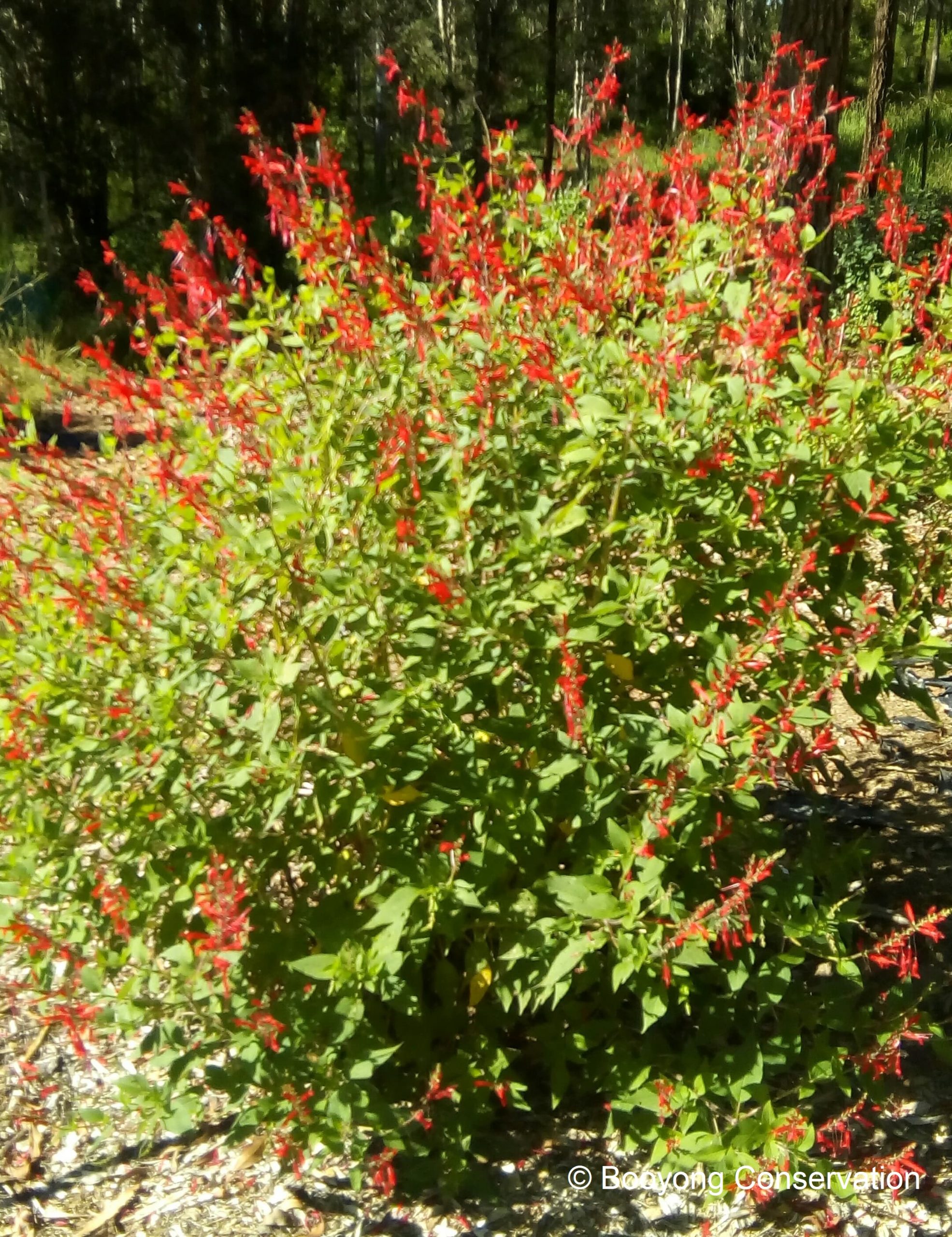I picked up a Pineapple sage (Salvia elegans) plant at The Secret Garden in Richmond recently and have been amazed at how quickly it’s settled in. It’s flowering beautifully at the moment and we’re very grateful to our neighbour Marlene for sending us this picture.
Pineapple sage is a perennial herb with stunning red flowers (especially in autumn) and the leaves (pale green and yellow) have a strong pineapple scent that remains all year round.
Growing – It will grow 1-1.5 metres so be sure to allow it plenty of space and consider planting it at the back of your herb garden.
Care – Pineapple sage likes a well-drained, organic soil in the sun and will require watering during dry and hot periods. It does not do well in frost and is a short-day plant, so flowers in autumn when the length of sunlight is shorter.
Pruning – This plant will become woody over time and requires regular pruning in late Autumn to keep it’s shape.
Companion Planting – Attracts butterflies, hoverflies and nectar feeding birds to the garden and goes well with tomatoes, carrots, strawberries and benefits cabbage, broccoli, cauliflower, brussels sprouts, kale, and kohlrabi by repelling a range of insects that are attracted to these Autumn crops.
Pests and Diseases – Aphids and Spider mites are common pests.
Harvest – Harvest flowers in late Summer or Autumn and leaves as required.
Propagation – Propagates easily from cuttings, plant 1 m apart in Spring.
Eating – Both the leaves and flowers are edible and consider using fresh, rather than hot to preserve the flavour of Pineapple sage.
Pineapple sage has a light and fruity flavour so is best in teas (cold and hot), used in a pineapple or mango salsa, fruits salad, as a sugar syrup in cocktails or cold drinks, in a pesto (perhaps with some lemon or lime and using macadamia nuts rather than pine nuts as they are lighter in flavour). The leaves and flowers could be added to rolled butter with garlic and lemon or lime zest to place on pork, fish or chicken and as always with edible flowers, they would also be perfect frozen in ice cubes or the petals scattered on ice cream. Another great idea I found was to add them to cream cheese and use as a spread.
Pineapple sage can be used to make a sugar scrub to exfoliate your skin in Winter.
- fresh pineapple sage flowers
- sugar
- oil (such as sunflower, olive, sweet almond)
Measure equal parts of sugar and pineapple sage flowers and blend together in your Nutra bullet, then lay it out on a tray covered in baking paper to dry overnight.
You can store the dried flavoured sugar in an air-tight jar out of direct sunlight and use as required or to make into a scrub combine two parts of flavoured sugar to 1 part oil.
To make Pineapple Sage Sugar Syrup
- Dissolve 300g sugar in 150ml water over a low heat until the liquid takes on a textured look, (don’t overcook it till it turns to toffee).
- Add a cup or so of fresh wash pineapple sage leaves, pop the lid on and let it cool.
- Strain and store in a glass sealed bottle or jar in the fridge.
They also make a lovely cut flower in a vase on the kitchen table – the fragrance and flowers are lovely.
